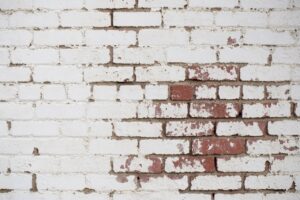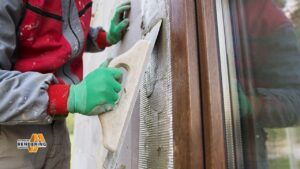There’s just something to the way that timber frame houses look. They combine old-fashioned charm with durable building techniques. But perhaps you want to transform the outside of a timber frame house. The way to make sure that this is happening is to include a render. Render is to the outside walls as skin is to the body. It has the capacity to make a house feel newer, protect it from the weather or even give an additional shot of warmth, literally, and of color. But can you render on timber? How do you render a timber frame house properly? Let’s find out.
Can You Render Over Timber?
The short answer is yes, you can render onto timber. But it’s not as easy as slapping render on any wood in your property. Timber moves. It swells and shrinks with atmospheric humidity and temperature. When it isn’t applied right, the render can crack or, worse, come off. And that’s why prepping the wood and using the proper materials is super important.

Preparing Timber for Render
The preparation of the timber is the most crucial step. Here’s what you need to do:
- Clean the Timber: Rake out any dirt, old paint or loose splinters of wood; fill large cracks if necessary. A scrub with a good stiff brush can remove them.
- Preserve the Timber: Apply a wood treatment to the timber to prevent rot and insect infestation. This is really crucial, especially if the wood is already old.
- Cover with Waterproof Membrane: Coat the timber frame in breathable waterproof membrane. This prevents water from reaching the wood, yet allows it to breathe.
- Apply Wire Mesh: Attach wire mesh to the wood with nails or staples. This way there’s something for renderers to hang on to. And ensure that the mesh is robust and doesn’t shift around.
Choosing the Right Render
Not all renders are the same. And some are better for timber frames than others. Here are a few options:
- Lime Render: This is the traditional option. Lime rendering is more flexible and breathable. It allows moisture to flee the wood, which wards off rot. It also doesn’t have the environmental cost of some of the other renders.
- Acrylic Render: Acrylic render is also a good choice. It’s pliable and can flex with the wood. It is also waterproof, which shields the timber from the elements. Acrylic rendering is a widely used rendering service offered by Australian Rendering Company Melbourne due to it being more tidy and resilient. They offer professional rendering services Melbourne wide, with acrylic, cement and cladding finishes available. You can get in touch with them by calling 0466 943 872 or sending an email to contact@australianrenderingcompany.com.au.
- Cement Render: Although cement render is durable, it might not always be the best option for timber frames. It’s not especially flexible, so if the timber expands a lot, it can crack. If you do decide to use cement render, be sure to add a special additive to make it somewhat flexible.
Applying the Render
After the timber has been prepped and you’ve selected your render, the next step is application. Here’s how:
- Combine the Render: See instructions on bag of render. Mix the render with water until a thick, creamy consistency is achieved. Always follow the provider’s instructions. The texture is crucial.
- Apply First Coat: With the trowel, spread a thin layer of render across the wire. Then press firmly to adhere it to the mesh. This coat is referred to as the scratch coat.
- Scratch the surface: Scratch the surface of the scratch coat while it is still wet. This provides something for the next coat to grab and adhere to.
- Second Coat: Apply a second coat to the dry scratch coat. This coat should be for protection and thicker than the first. It should be smooth and even.
- Apply the Finish Coat: Once the second coat has dried, apply a final finish coat. This is the finish coat. You can use various tools to develop various textures. You can create a stippled texture with a sponge for instance.
- Curing the Render: Retain moisture in the render as it cures (for about three days). That helps it to dry slowly and not crack. To do this, make sure to spritz it with water every so often.
Tips for Rendering Timber Frames
Rendering a timber-framed house can be difficult, but these tips should make a smooth job of it:
- Have the Right Tools: Having the right tools can make all the difference. Spend the money on quality trowels, floats, and mixing implements.
- Work in Sections: Do not attempt to cover large areas too quickly. Work in small patches so that the render doesn’t set prematurely.
- Cleanliness is Key: Utilize clean water and tools at all times. Dirt can degrade the render and cause it to crack.
- Get Help: If you don’t know what you’re doing, get a pro to help. As rendering can be tricky, it’s best to get it right the first time.
How to render over wood?
When rendering over wood, clean the wood as best you can. Scrub down loose paint or dirt. Then you can add a waterproof membrane. Put a wire mesh over it and cover with a layer of render, in thin layers. Make sure one layer dries before adding the next.
How to render timber frame?
The timber frame should be treated and cleaned before rendering it. And put a breathable waterproof membrane on it and cover it with wire mesh. And then skim with scratch then brown and then finish. Keep the render moist to cure it.
How to render a timber frame house?
To render a timber frame house, it all begins with meticulous preparation. Wash the wood, treat it and then cover it with a waterproof membrane. Add wire mesh and several thin applications of the render. Allow each coat to dry before adding the next. Opt for a flexible render such as lime or acrylic.
Can you render onto timber?
Yes, you can stucco or render onto wood, but it requires the right prep. The wood should also be cleaned, treated and lined with a waterproof layer. Wire mesh is also essential for the render to stick to.
How to render over timber?
Rendering over timber can be a tricky process that many homeowners won’t have a clue about. Step 1: Clean, and condition the wood. Install a waterproof membrane, and then some wire mesh. Paint on render in thin coats (each has to dry before another goes on). Go with a pliable render so it won’t develop cracks.
How to render a timber frame wall?
Prepping for a timber frame wall is essential. Wash the wood, and it also should be treated for decay. Vent with breathable waterproof membrane (secure wire mesh to it). Layer the render and cure it to prevent cracking.
How to render wood?
How to render wood means prepping the wood. Scrub the wood good and put on a water seal. Fix wire netting over, and render in thin coats. Make the rendering flexible for expansion/contraction of the wood.
Do timber framed houses need outsourcing for rendering?
When rendering a timber framed house, prep is everything. The render should be flexible and protected from moisture. This is what keeps the house looking good and strong for many years.
Render over wood?
Over wood, it just requires proper prep. Use wire mesh if you want to keep it clean and protect it with wire mesh. Flexible render can help to avoid cracks.




